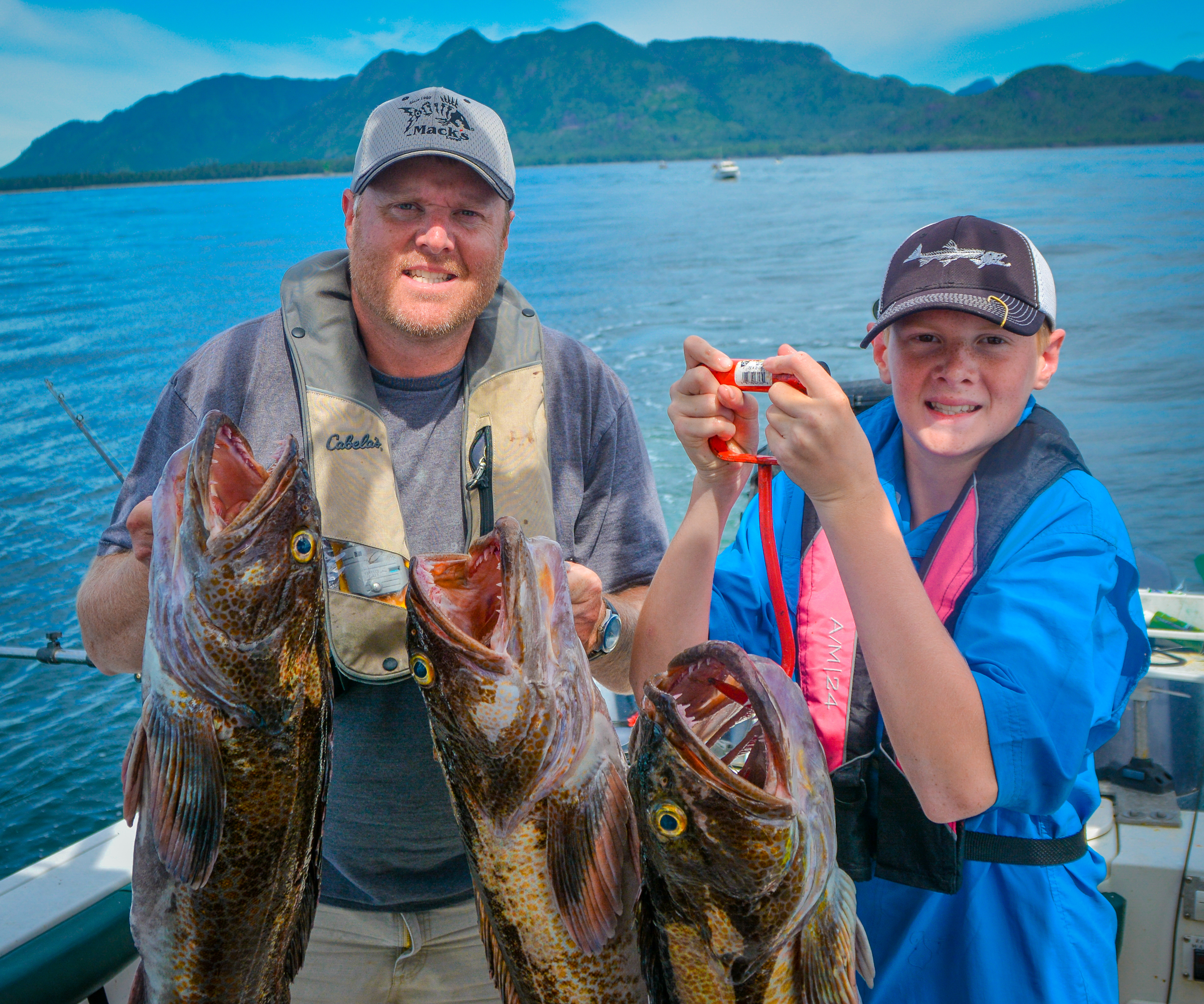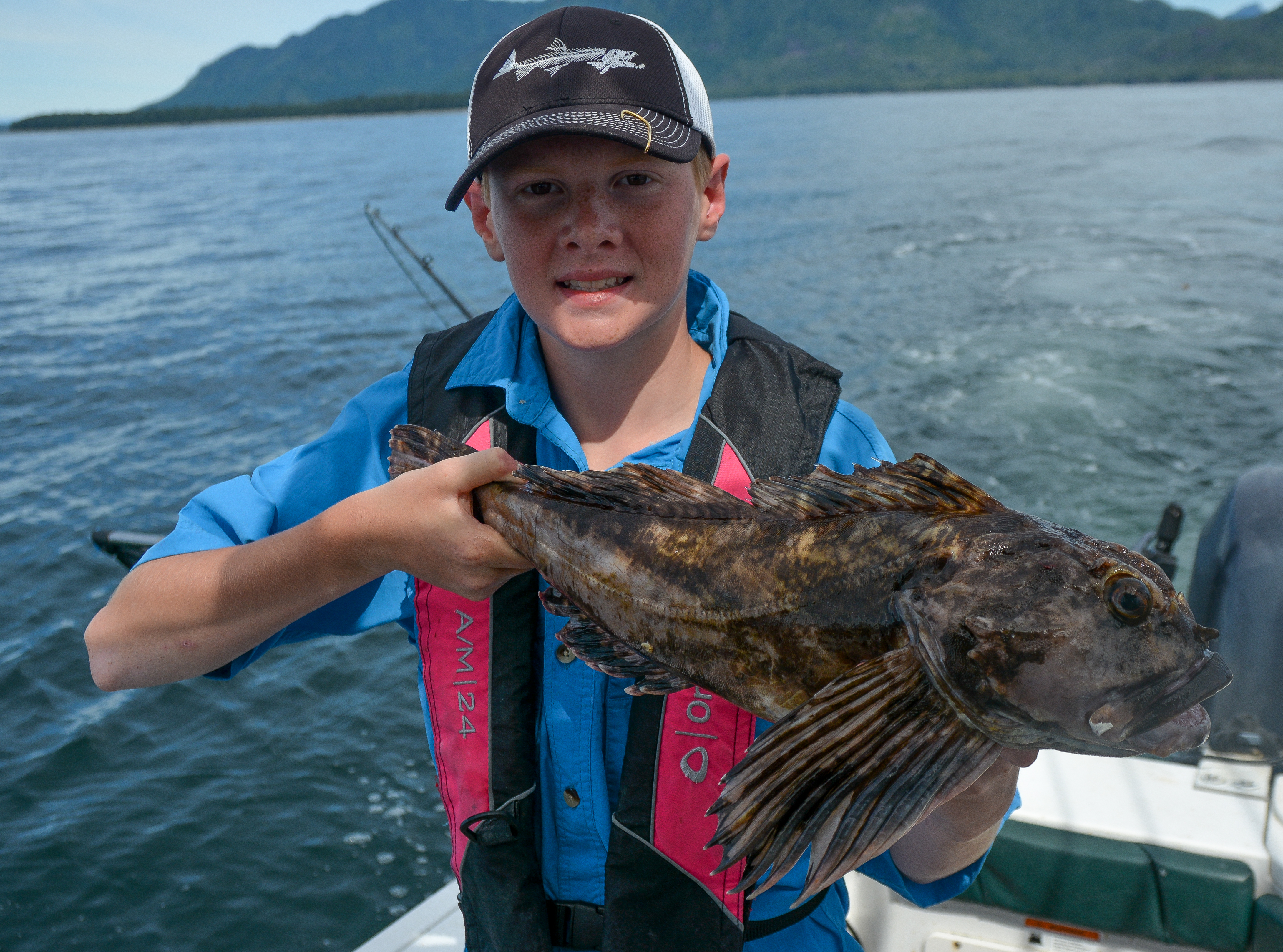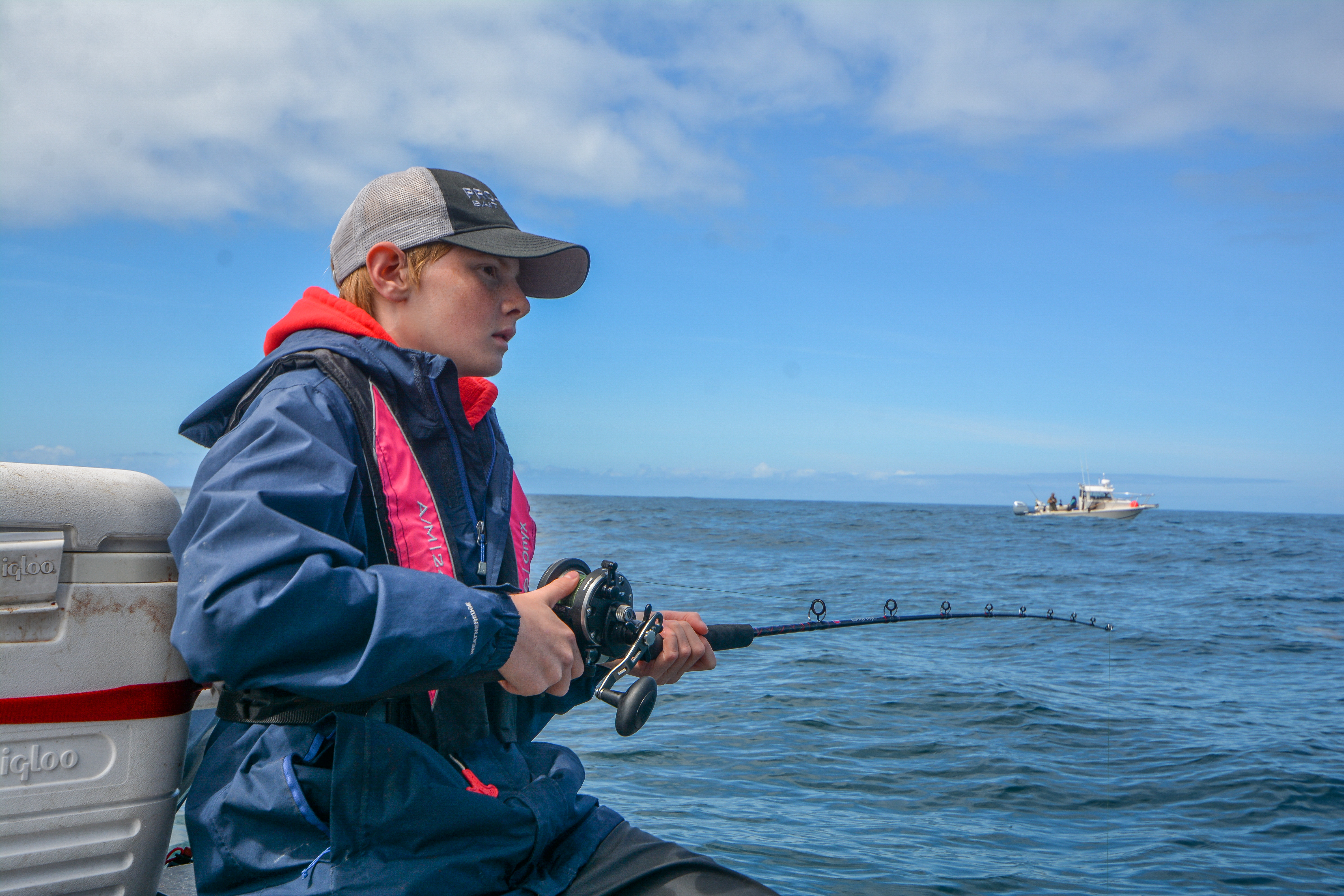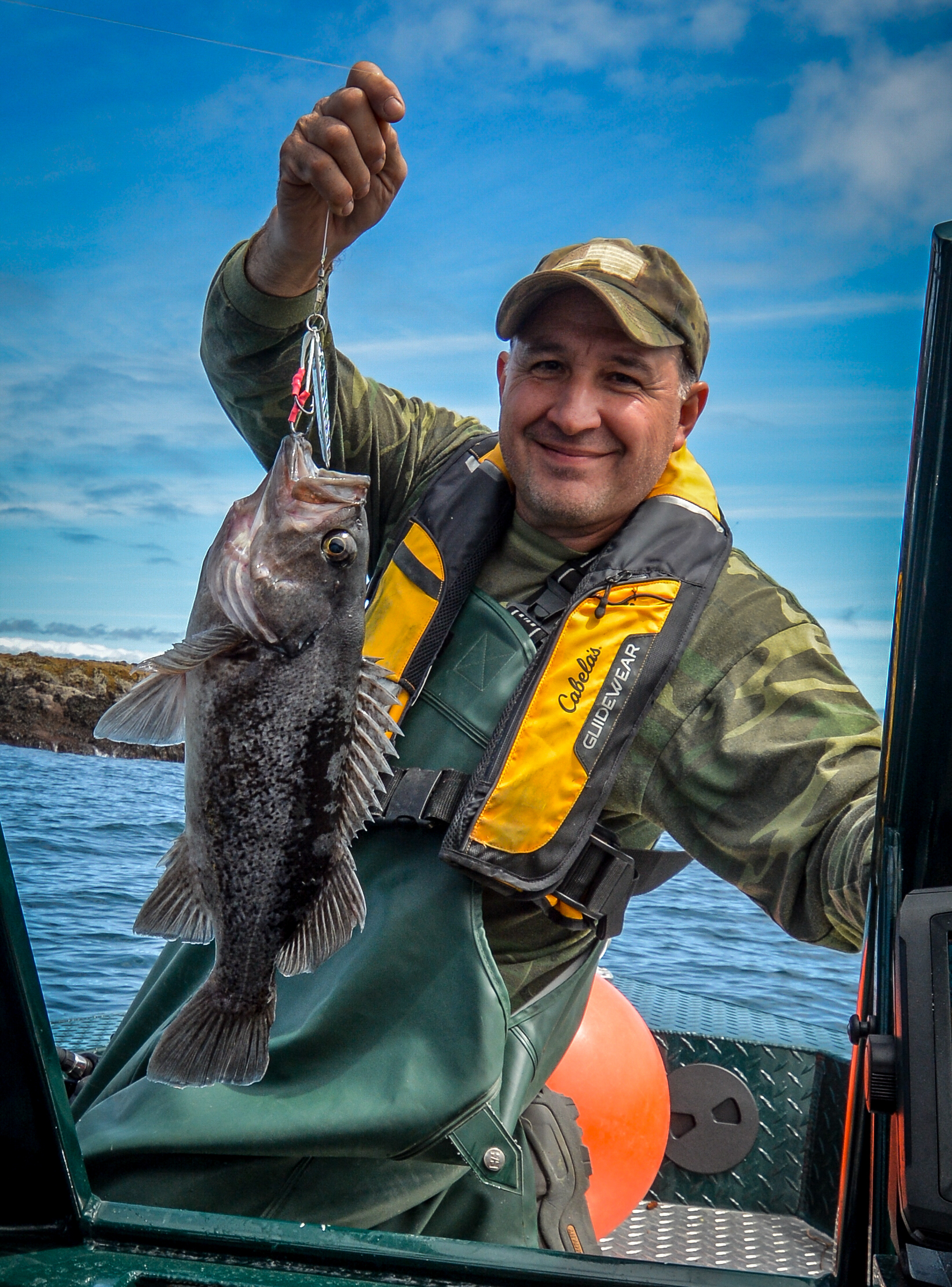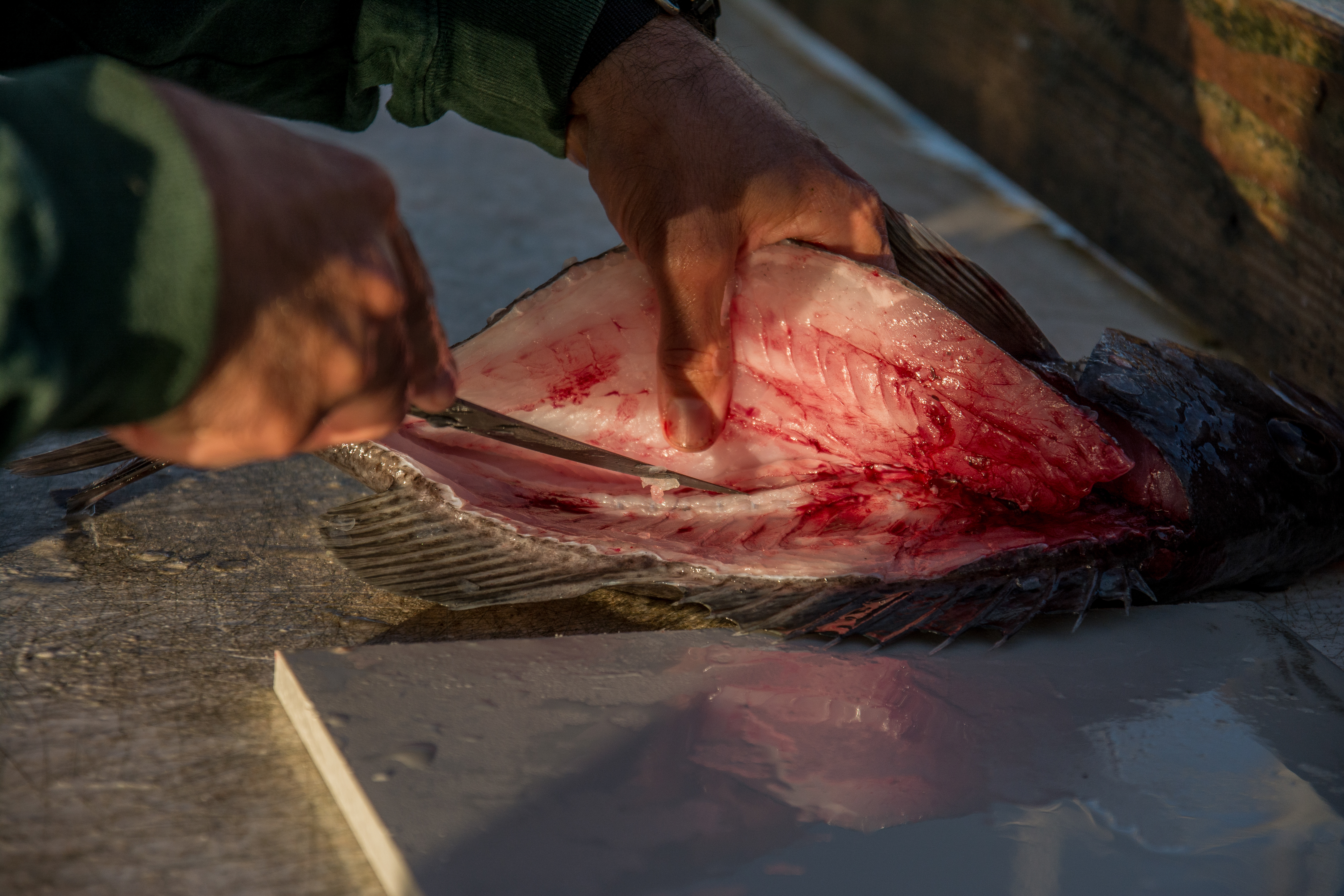Search
Latest Articles
Ocean Bottomfish
by Jason Brooks, March 07, 2020
Starting in Marine Area 1, out of Ilwaco, many charters and private boats head out towards the Columbia River bar. This is bar crossing is one that you must pay attention to as well as be ready to adjust your plans on any given day. There are several charters that operate out of this small fishing town and is your safest way to head out to the bottom fish grounds. When it comes to Rockfish WDFW lowered the limits to seven last year and no Yelloweye can be kept. The seven Rockfish limit leaves enough room for you to still catch two Lingcod to make a possession limit of bottom fish at nine. There are a few other restrictions when it comes to Lingcod so be sure to check the regulations.
Westport is probably Washington’s unofficial “Fishing Capitol” known for summer Chinook and Coho. Thanks to several charters that belong to the Westport Charters Association-named Organization of the Year by WDFW in May 2018-you can do a combo trip later in the season after salmon opens up for both bottom fish and salmon. But until then be sure to go out and target the many black seabass and lingcod offered out of this harbor. There is no size limit to the lingcod which can grow to large proportions but most are “eater” size in the five to ten-pound range. Same limits apply as Marine Area 1 with a total of nine bottom fish, seven of which can be rockfish and two lingcod.
The Westport bar is not as deadly as the Columbia River bar but it is dangerous. Small craft need to head any Coast Guard warnings but one thing this fishery provides is a jetty to fish near. Even sixteen to eighteen foot boats can head out on a calm day and fish along the jetty just be aware of currents and tides. Those that want to fish along the jetty from shore can do so on the north side of the bay, at the town of Ocean Shores. Rock hopping along any jetty is dangerous and you should use caution. Wear a life jacket because if you slip and fall the crashing waves can make it hard to climb back up onto the rocks. The many charter operations out of Westport offer great trips for bottom fish before the salmon season begins.
Further north Marine Area 3 La Push has some additional rules including the 20 fathom line boundary as well as a bottom fish area closure on the northern end where it meets Area 4. Some charters will venture to Marine Area 3 from Westport, especially to find larger lingcod. This is early spring and caution should be used when making the trip out to Marine Area 3 in a private boat but the fishing can be really good.
Marine Area 4 west of the Tatoosh-Bonilla line opens up this month for bottom fish. Here you can head out of Neah Bay (Marine Area 4 east of the line is open year around). There is some near shore fishing with many rock piles and pinnacles in the area. A long drive but well worth it to the far tip of Washington for some great eating fish. Be sure to watch the weather reports and the winds as this is the start of the Strait of Juan de Fuca and as the winds come off of the Pacific Ocean and tides clash coming out of the straits the waves can become dangerous. Stay close to shore to find some of the best fishing and an eye on the weather.
Regardless of which Marine Area you choose to hit after it opens mid-March be sure to have a sharp fillet knife and some freezer bags along. Last spring I overheard some guys talking about taking their kids fishing. At first I thought they would be discussing trout lakes or some other local angling opportunities until one mentioned a “fish fry” for the following day. I inserted myself into their conversation to learn that each spring, before the trout season opens, they take their kids out to fish for rockfish on a charter. I have done this several times and each time it has been a lot of fun. Even if you own a boat going on a charter can be the better way to go as you can take several friends and not worry about navigating tides or bar crossings. For those who have friends or family members that have little to no fishing experience then taking a charter is one of the best ways to get them out and fishing. Depending on the size of your group and the type of experience you are wanting will determine which kind of charter you go on.
Smaller boats, known as “six-packs”, are fast and hold six anglers along with the crew. They can cost a bit more than the traditional big boat charter. There are other benefits of the six-pack charter like having the entire boat to your group and getting out to the fishing grounds and back much faster. Some captains only offer trips if you book the entire boat so be ready to have enough friends to go along and no more than what is allowed. The “big boat” charters cater to several anglers and mix groups. To have the boat all to yourself expect to bring along a dozen or more friends. But these slow boats make for a comfortable ride and Washington laws allow anglers to keep fishing until the boats retention is caught. Several years ago I went out on one of these charters with some friends from Eastern Washington along with another group of anglers that we did not know. On the way out to the fishing grounds the other group decided to enjoy some adult beverages and by the time we dropped our line into the water half of them were leaning over the rail and “chumming”. We fished the entire day catching our limits as well as theirs. They were happy to take home some fish and we were happy to keep reeling in fish!
Realize that these charters are used to taking out a lot of people and that the “angling” is not a finesse fishery. The rods are usually fiberglass with level wind reels spooled with stout monofilament. Some use jigs or artificial baits and others use live herring. Deck hands can be picky about rigging bait or landing fish but if you know what you are doing most appreciate not having to coddle you. Then again, it is your trip and if you don’t want to bait the hook then the deckhand is happy to do it for you. Before you bring your own gear be sure to call ahead and talk to the captain or deckhands as some will restrict certain gear. When I decided to bring some sensitive rods allowing us to actually play the fish I was told to only have monofilament line on the reel. This is because lines often get tangled and braid makes a big mess as well as it is thinner diameter and as the boat drifts it can cause tangles with the thicker monofilament that is angled differently. One thing you might want to bring along are some of your own jigs. Try large flies that mimic shrimp or a UV colored jig that has a stout 4x hook. When you get into the rockfish jigs can be deadly as well as you don’t have to stop and re-bait the hook.
At the end of the day be sure to tip your deckhand and even the captain for their hard work. You will find that these trips are fairly inexpensive since they can put several anglers on the boat. This does not mean that you should be “cheap” but instead extend the gratitude to the crew. Most charters fillet your fish for a price, a few dollars (or less) per fish, and then bag it for you in a large fish bag. The filleting is done as you cruise back to the dock so the fillets are washed with seawater. Be sure to run freshwater over them before you vacuum seal or freeze them. I like to take an ice chest and a couple gallon jugs of drinking water and leave it in my truck. At the end of the day I will fill the ice chest with the drinking water and put the fillets in it. Then grab a few bags of ice and make a fresh water slush for the ride home. This gets the salt water and any blood out of the fillets and keeps them very cold.
For the “do it yourself” angler that will be taking their own boat, or going with friends, then be sure to take the right gear. Most bottom fishing is done with heavy jigs. In shallower water and during slack tide a 3 to 4-ounce jig works really well. For strong tide exchanges and in deeper water where it might be hard to reach the bottom use jigs up to 8 ounces. Jigs with UV paint or glow in the dark paint do really well, especially on overcast days that often occur in March. You can us treble hooks and using a squid skirt to cover the hook adds action as well as it is a great place to put Pro-Cure SuperGels. Scent is crucial even for lead jigs as it will draw in fish as well as create a bite. Top scents are Octopus, Shrimp, and “Flounder Pounder” in the Pro-Cure SuperGel. If using a lead jig by itself then the Pro-Cure Super Sauce will stick to it much better with Anchovy and Herring being good choices. Rods should be fairly stout with a lighter action tip to feel the bit. Reels spooled with 30-pound Izorline XXX will land bottom fish and allow you to break off if the jig gets caught in the rocks.
Look for pinnacles and rock outcroppings. A GPS sonar unit with a pre-loaded map will help you immensely in finding fish. Once you find rockfish it is easy to catch limits as they tend to school up. The hardest part will be to stay on top of the fish. Be sure to hit the waypoint so when you drift off you can get back on them easily. Lingcod like rocky areas where they can hide and pounce on their prey. Because of this be willing to lose some gear. Another option is to switch out the hooks to a Gamakatsu “assist” hook set-up with are two hooks tied with a piece of braid that you loop through the eye of the jig. This puts the hooks at the top of the jig instead of the bottom and is less likely to get hung up or stuck in the rocks. Be sure to always have a descender device ready, either attached to an extra rod or to a downrigger. Know how to use these devices, which are required by law to be aboard the boat anytime you are fishing in the salt water. Safely release any unwanted fish or fish that cannot be retained to a proper depth. We need to take care of this fishery so it can continue to be a fun and great way to fill our freezers with great tasting fillets.
March can be a month of anticipation as we wait for April’s trout opener or to chase Spring Chinook. Don’t let the month go by with the anxiety of not getting outside. Instead head for the coast and partake in the bottom fishing that is about to start. Fill the freezer or have a fish fry after taking out some friends and family.
Jason Brooks hails from North-Central Washington. The son of a fishing guide, Jason is an avid hunter, angler, outdoor photographer and published writer. He resides in Puyallup with his wife and two boys.
